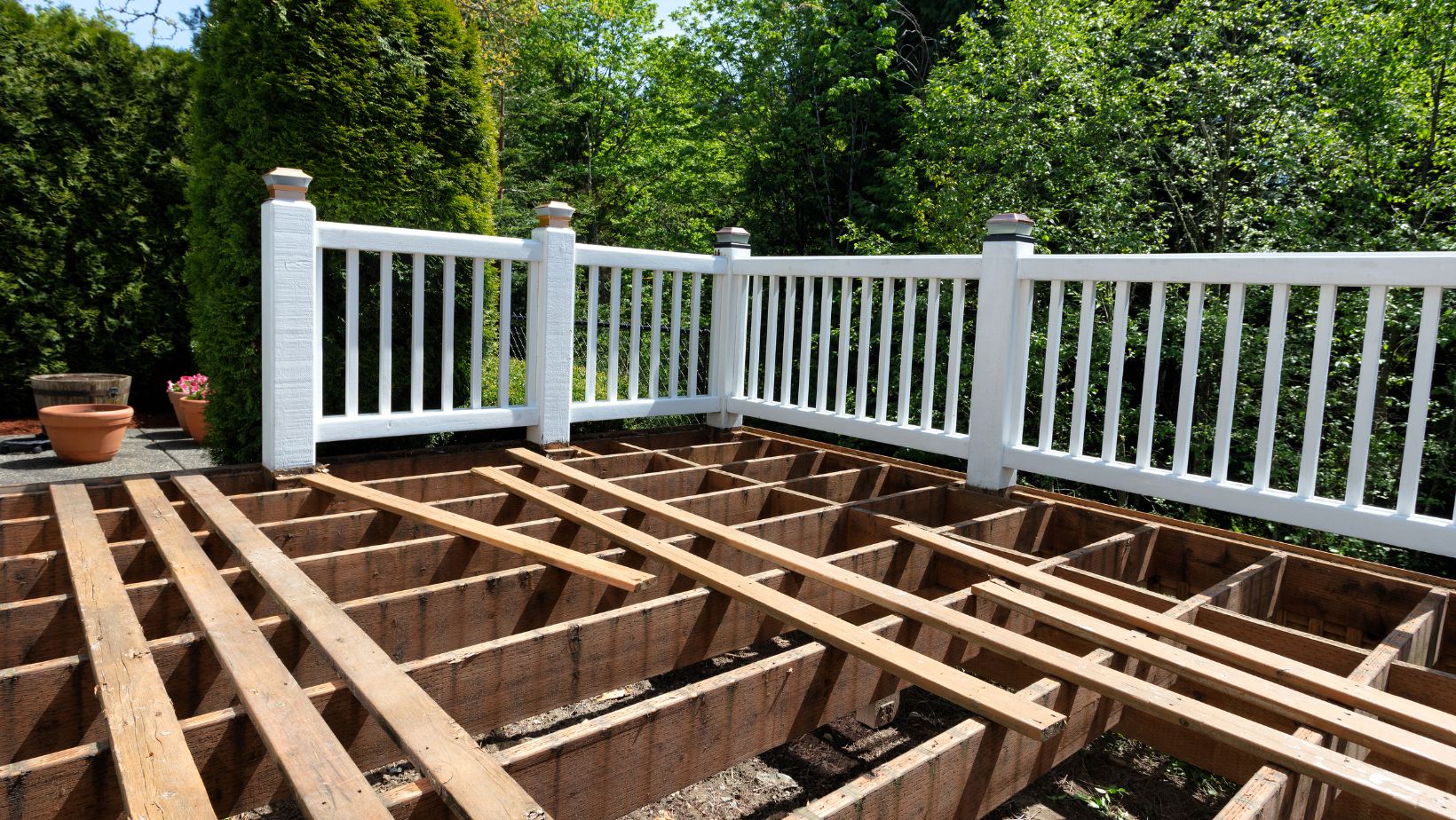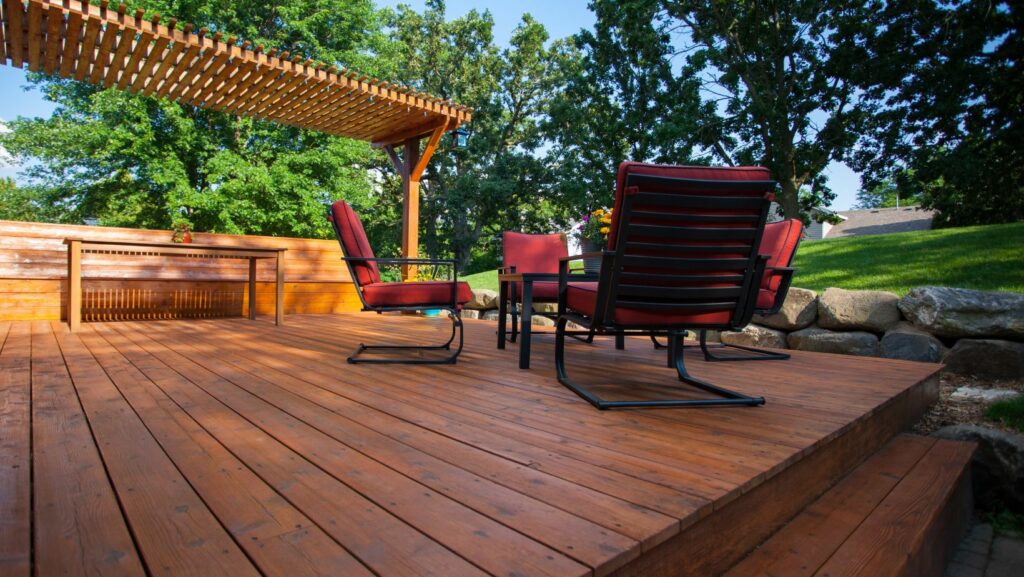Weather conditions are crucial in constructing fences and decks, impacting everything from materials selection to installation techniques. Builders and homeowners alike must consider the effects of various weather elements throughout the construction process to ensure the durability and longevity of these outdoor structures. We will explore how different weather conditions affect the construction of fences and decks by Creative Fences & Decks, offering insights into best practices and considerations for each scenario.
Rain and Moisture
Rainfall and moisture are significant considerations during fence and deck construction. Excessive moisture can affect the stability and lifespan of wooden materials commonly used in these structures. When exposed to prolonged damp conditions, wood is susceptible to warping, swelling, and mold growth. To prevent these issues, builders often delay construction during rainy periods. Additionally, rain can hinder the curing process of concrete footings, affecting the structural integrity of the entire installation. Proper drainage planning and using moisture-resistant materials can mitigate these risks.
Extreme Temperatures
Both extreme heat and cold can pose challenges during fence and deck construction. In hot weather, materials like wood and vinyl can expand, leading to buckling or warping if not adequately acclimated or installed. Conversely, freezing temperatures can make materials brittle and challenging, particularly for cutting or shaping tasks. Builders may need to adjust installation techniques and schedules to accommodate temperature fluctuations, ensuring that materials are handled and installed correctly to prevent future issues such as cracking or structural instability.
Wind and Storms
High winds and storms present immediate dangers during construction and long-term effects on fence and deck durability. Strong gusts can damage partially constructed structures or improperly secured materials, leading to safety hazards and project delays. Additionally, storms can deposit debris or water onto exposed materials, potentially compromising their integrity.

Builders often reinforce temporary supports and cover materials to protect them from inclement weather. Choosing wind-resistant materials and designing structures to withstand local wind conditions are essential in ensuring fences and decks’ longevity in storm-prone areas.
Sunlight and UV Exposure
Sunlight and UV exposure can accelerate the deterioration of fence and deck construction materials. Prolonged exposure to UV rays can cause fading, discoloration, and degradation of finishes and protective coatings. This can weaken the structural integrity of wood, composite, and metal components over time. Builders may recommend using UV-resistant stains and paints or applying protective sealants to mitigate these effects. Additionally, selecting materials known for their durability in UV-rich environments can extend the lifespan of fences and decks exposed to intense sunlight.
Seasonal Considerations
Seasonal changes bring distinct challenges to fence and deck construction. Spring and summer offer favorable conditions for outdoor projects, with mild temperatures and longer daylight hours facilitating efficient work. However, increased rainfall during these seasons necessitates careful planning to avoid moisture-related issues. Fall and winter pose challenges with colder temperatures and shorter daylight hours, requiring scheduling and material handling adjustments to maintain productivity and quality. Builders can optimize conditions for successful fence and deck installations throughout the year by aligning construction schedules with seasonal weather patterns.
Soil Conditions
Soil conditions significantly influence the stability and longevity of fence and deck installations. Wet or clay-like soils can shift and settle over time, affecting the alignment and structural integrity of posts and footings. Builders often conduct soil tests before construction to assess drainage and load-bearing capacity, enabling them to make informed decisions about foundation design and material choices.

Techniques such as installing deeper footings or using soil stabilizers can help mitigate the risks associated with unstable soils, ensuring that fences and decks remain secure and level over their lifespan.
Maintenance and Weather Resilience
Beyond construction, ongoing maintenance is crucial in enhancing weather resilience for fences and decks. Regular inspections allow homeowners to promptly identify and promptly address weather-related damage, such as loose boards, cracked coatings, or mold growth. Applying weather-resistant finishes and sealants periodically can prolong the lifespan of materials and protect against UV damage, moisture absorption, and temperature fluctuations. Proper maintenance practices tailored to local weather conditions are essential for preserving the aesthetics and functionality of fences and decks, ensuring they continue to enhance outdoor spaces for years to come. By investing in proactive care and using weather-appropriate materials, homeowners can maximize the durability and enjoyment of their outdoor structures in varying weather conditions.
Constructing fences and decks involves navigating various weather conditions that impact materials, installation methods, and long-term durability. Rain, extreme temperatures, wind, sunlight, and seasonal changes all play critical roles in determining the success and longevity of these outdoor structures. By understanding these influences and adopting appropriate strategies, builders and homeowners can ensure that their fences and decks withstand the elements and provide functional, aesthetically pleasing additions to outdoor spaces. Balancing weather considerations with construction techniques is essential for achieving optimal results in every project.


More Stories
Beyond the TFSA and RRSP: Non-Registered Investment Accounts in Canada
From Wet to Wow: How Basement Waterproofing Unlocks Hidden Home Potential
From Functional to Fabulous: How a Bathroom Renovation Enhances Your Daily Routine